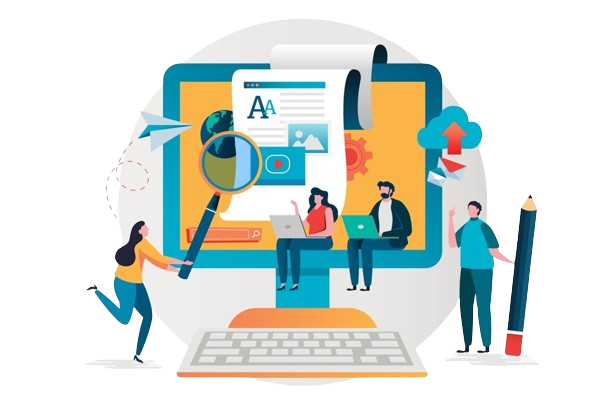What is an Infographic? Examples, Templates, Design Tips
Website Design Infographics have been a center of communication in offices, classrooms, and online since they emerged into the graphic design scene approximately 15 years ago.
However, the phrase “infographic” may still be unfamiliar to you if you’re new to the field of design.
One may question what infographics are.
I’ll answer all of these questions and more by giving you a crash course on infographics and infographic creation today. If you’re not a designer, don’t worry; I’ll also demonstrate how to quickly alter designs using various Infographic Makers and simple-to-edit infographic templates.

What is an infographic?
"A visual representation of information or data" is what the Oxford English Dictionary defines as an infographic, also known as an information graphic. However, an infographic's meaning is far more precise. An infographic is a collection of graphics, data visualizations (such as bar graphs and pie charts), and minimal text which offers an easy-to-understand overview of a subject. Infographics, like the one below, use visually catching content to convey information effortlessly and effectively. For visual communication, infographics are a priceless resource. The most imaginative and appealing infographics often leave a major effect because they capture and hold our attention. But it's important to keep in mind that an infographic's graphics need to accomplish more than just amaze and attract.
Why should you use infographics?
Infographics are an excellent way to simplify difficult information. They are always available to assist you: Give a brief synopsis of the subject Describe a difficult procedure. Present survey results or study findings. Condense a lengthy report or blog entry. Examine and contrast several choices. Increase public awareness of a problem or situation An infographic is a useful tool when you need to provide someone with a very brief overview of something that can be challenging to express in words alone.
Consulting and freelance infographics
Timeline infographics are used by consultants to help customers understand new or industry-specific issues and to portray timelines for projects. Infographics are used by consultants to Deliver information to clients in a unique way. In client proposals, make your case stronger and include timelines. Provide clients with progress reports. Include an infographic to show project timeframes or progress "by the numbers" in your report.
Small business and entrepreneurship infographic examples
Infographics are a useful tool for entrepreneurs and small businesses who want to broaden their brand awareness and reach new customers. For tiny firms, this infographic example of a brand style guide is excellent. Because it's brief and visually appealing, readers will learn the material more quickly. One frequent kind of document that every organization has is a list. However, reading lengthy lists might get tiresome. Readers are unlikely to even recall the things on the list. Companies can utilize infographics, such as a vibrant infographic, to display lists for improved learning retention.
Government infographics
What are infographics used for in the governmental sector? Governments transmit statistics and census information through infographics. Infographics, like vaccine infographics that support accurate vaccine information and raise vaccination rates, can also be used by governments to disseminate important healthcare information.
Nonprofit infographics
Nonprofit website design Infographics are a useful tool for nonprofits to advertise events, spread the word about their causes, and highlight their successful fundraising campaigns.
Infographics are used by charities to:
- Make facts and information regarding a particular cause simple for people to understand. This can be used for a poster, fundraising page, social media campaign, newsletter, and more.
- Create a campaign plan.
- Show the effect of fundraising by sending donors an email.
Education infographics
Infographics are a useful tool used by trainers and educators to help staff members and students remember information.
Want to clarify a complicated procedure? Process infographics can be helpful in the visual communication of complex procedures.
Infographics come in handy when you want to make an impression with your data or message, or when you need to convey information fas
How do I create an infographic?
If my argument has persuaded you that infographics are a useful tool, you’re undoubtedly curious about how to make your own.
A wonderful resource for infographic creation is our step-by-step guide on how to make an infographic.
Regardless of how excited you are for creating your first infographic, you shouldn’t dive blindly into the infographic creative design process without a plan.
Make an outline for an infographic first, instead.
- Make an infographic outline to arrange your material.
- Select a template for an infographic.
- Make your infographic unique.
1. Organize your information with an infographic outline
Making an outline can help you in arranging your ideas and guarantee that the stuff you provide will fit into an infographic.
Use these four steps to create an infographic outline using already present content:
- Define the main points of your article.
- Choose the headings, subheaders, and facts.
- Take into account the paragraph and point lengths.
- Add a note for the designer.
2. Pick an infographic template
After creating an outline, the next step is to select an infographic template.
Pre-made infographic templates can help you get started on your infographic by providing you with infographic creative design inspiration. It can assist to even use them as a point of departure.
When choosing an infographic design, there are many things to take into account, such as how well the colors, fonts, length, size, and style of each template complement your material.
The most crucial thing to remember is to select the appropriate infographic template for your topic.
3. Customize your infographic
After selecting an infographic template, you can begin modifying it to suit your requirements.
The infographic examples in this page can be customized in the following ways:
- Alter the text’s color and the backdrop.
- Modify the language to better convey your point.
- Replace or add icons that make sense for your narrative.
- Put your company’s logo in the footer.
- Enlarge or reduce the list’s size.
What are the different types of infographics?
Statistical infographics Informational infographics Timeline infographics Process infographics Geographic infographics Comparison infographics Hierarchical infographics List infographics Resume infographics Every kind of infographic is designed to represent a particular kind of content. Compared to other infographic styles, informational infographics, for instance, usually contain a greater amount of tex.
What makes an infographic design effective?
When creating an infographic that effectively conveys information, it's imperative to understand that our brains look for patterns in visual data that help us in understanding the outside world. This concept can be used to visually organize our data and develop patterns that will strengthen the point we're making. Let's go over some infographic design best practices to assist you in producing infographics that are both attractive and useful. For more simple tips on how to make your design stand out, see our post on 7 ways to modify your infographic template.
Create a text hierarchy with three different font styles
One of the first things viewers notice about an infographic when they first view it is the font. Poor font selection might detract from an otherwise excellent infographic. We've compiled a list of common font types to help you get started. Establishing a distinct text hierarchy with three distinct font styles—one for the main heading, one for the section headers, and one for the body content—is crucial to properly utilizing typefaces in infographics. The largest and most stylized font should be used for the main header. Consider it a means of establishing the tone for your infographic.
Use images, icons, and illustrations to make key takeaways memorable
Last but not least, ensure that visuals such as pictures, icons, symbols, and illustrations, as well as data visualizations like graphs and charts, are the main focus of your infographic. Using images in your content is essential to making it interesting and memorable. Text and images are balanced equally in the finest infographics.It's crucial to enjoy creating your design as well. It doesn't have to be solely somber and businesslike. Illustrations are excellent tools for telling stories, and infographics should be captivating and memorable.
FAQ
And so you have questions... We have answers.
Frequently Asked Questions When Developing a Content Strategy

The main goals of our content strategy should be to drive traffic, increase engagement, and ultimately convert leads into customers.
Our target audience is the individuals living in Miami looking for content development services. To resonate with them, we need to create relevant, valuable content tailored to their needs and preferences.
Success can be measured through key performance indicators (KPIs) such as website traffic, conversion rates, engagement metrics, and lead generation.
We will use channels such as our website, social media platforms, email marketing, and SEO to reach our target audience and drive traffic to our content.
It is essential to regularly review and update our content strategy to ensure it remains relevant, effective, and aligned with our business goals. Schedule regular reviews to make necessary adjustments.
Get a free consultation!
Final Thoughts
In conclusion, content strategy development services play a critical role for businesses that want to excel online. Miami SEO agency, is designing a successful content strategy to meet your specifics. Our business vision is about recognizing your business needs so we can create top-quality content for you and make efforts to ensure the success of your business. We are with you at every stage.
Contact us today to figure out how we can take your business to a whole new growth level online.




